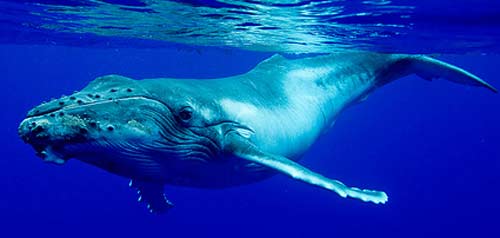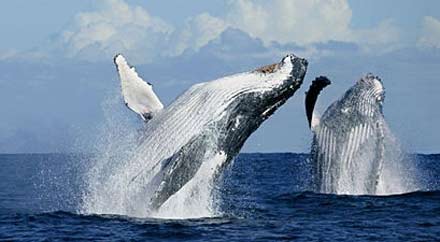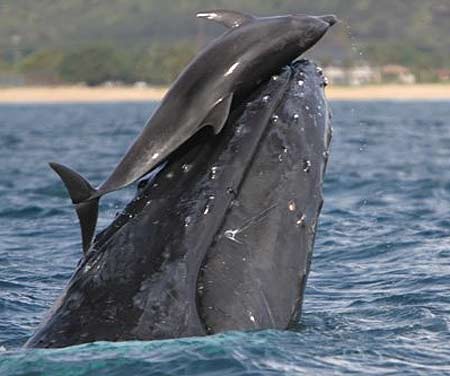Humpback Whale – Recovering Population

Humpback whales are one of the larger baleen whales of the rorqual group. They can grow up to 16 metres long (52 feet) and weight around 36,000 kg (79,000 pounds). They have a very unique shape: their eyes are positioned below the bottom of their mouth, they have very large, elongated pectoral fins, a hump and a tail with a wavy outline. Individuals can be identified from the shape and outline of their tail.

Humpback whales live in four distinct population groups, and are migratory. They can be found in oceans all over the world, except for the Baltic Sea, and the eastern Mediterranean. They typically spend summers in the cold polar waters, where they feed and bulk up for the winter. In winter, they hardly feed at all, and live off their fat reserves.

Winter is spent in warmer tropical and subtropical oceans, where they go to mate. They will return to the same mating spots and travel up to 25,000 km (16,000 miles) when migrating every year.
Almost Extinct
Humpback whales were saved from extinction (caused by over-hunting for commercial purposes) when a world-wide moratorium was placed on whale hunting in 1966. Since then, the population has gradually recovered and whale watching permits have been given to 16 different countries, where tourists, researchers and enthusiasts can observe whales up close during the mating season.

Dolphin and whale playing – Photo Credit: Lori Mazzuca
In the 20th Century, almost 200,000 whales were killed by hunters. By 1946, concerns were raised by the International Whaling Commission. By 1966, the ban on humpback whale hunting was put into effect.
The whales therefore provide a massive source of income for these regions, such as in Hermanus, South Africa, where there is an annual whale festival.

The first documented attempt at hunting humpbacked whales, was from 1614, by Captain John Smith, off the coast of Maine.
From 2008, the population has been classified as ‘least concern’, and their population is normalizing. It is still as endangered species in the United States, due to the smaller population group in nearby waters.
Singing Whales
The humpbacked whale, like other whales, has no vocal chords, but can ‘sing’ by forcing air through its nasal cavities. A wide range of sounds can be made by both males and females. Only males have songs, which last for 10 to 20 minutes at a time, and carry for thousands of miles underwater, due to their low frequency. Each oceanic region has the same song for its whale population.
